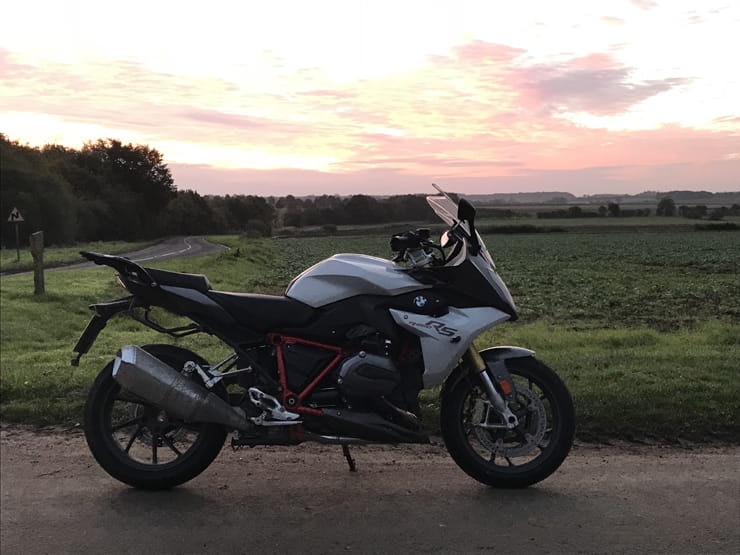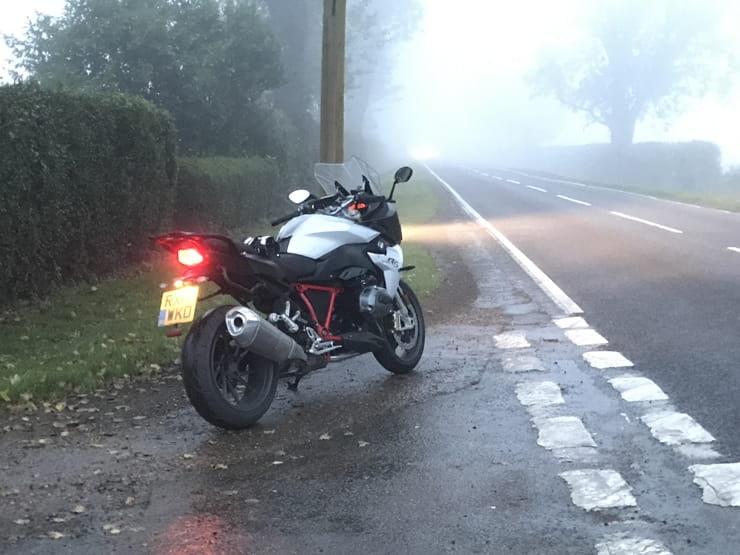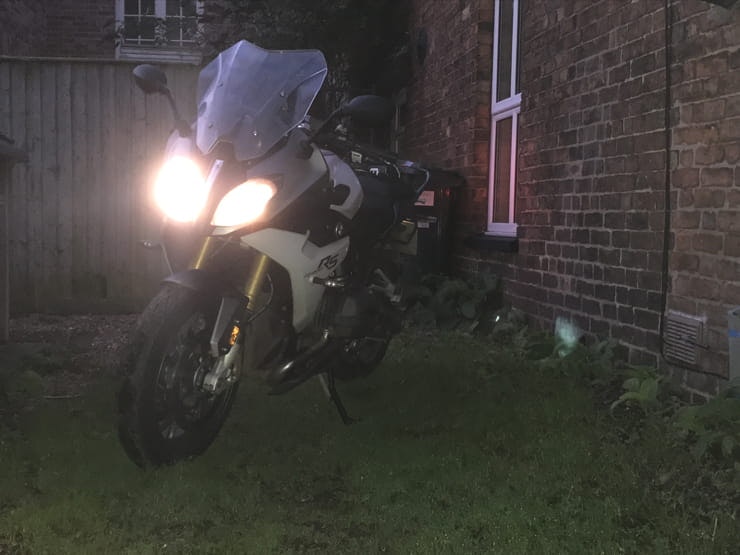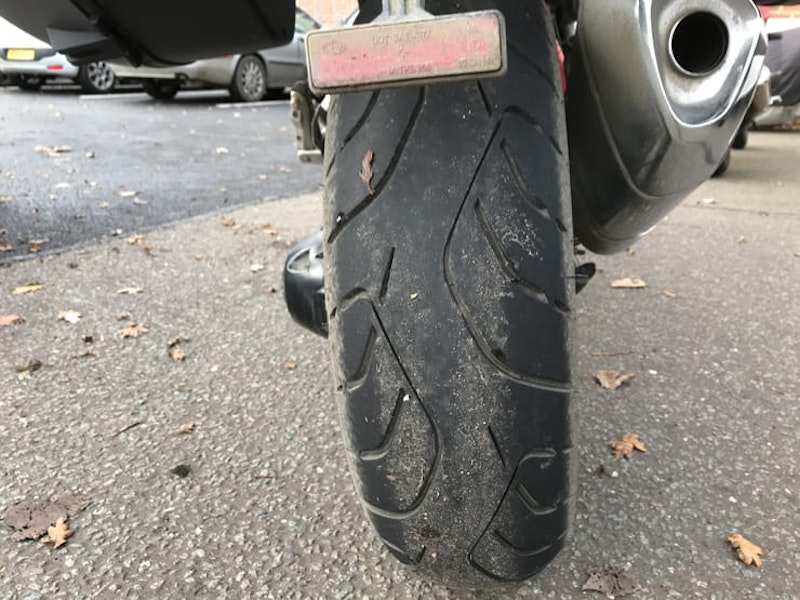BMW R1200RS (2017) - Long term review - Pt 5
By Steve Rose
BikeSocial Publisher
28.11.2017
Winter...
Welcome to my new office. As summer 2017 passes into history the R1200RS becomes as much about utility as excitement. Here to there as quick and efficiently as possible. But this morning, everything rewinds a week or two and it feels like that last great ride of the summer
Cold but not chilled, dry, but still just about grippy. This is the week when tyres really matter. Science is against us, what’s needed today is stability, consistency, grip and heated grips too.
Summer gloves, but with a few additional, warming volts. We’ve bonded now – instinctive actions, muscle memory and familiarity get me to work quicker than ever without remembering the journey.
The Dunlop RoadSmarts are 4000 miles old and like the original Metzelers at the same mileage, they have plenty of tread left but are starting to square-off in the middle. Tyre choice is a personal thing depending on how you ride. The Dunlops suit my style on this bike better than the Metzelers did and are noticeably more confident in the wet. The starting-to-square rear is not so bad that it affects the steering yet, but it won’t be too long. Everything else on the bike looks and feels like new. It gets cleaned once a week, which, in summer was barely necessary, but recently, in mud-coated, rainy Lincolnshire is about five days too long between polishing.
Shaft drive is one of those things that doesn’t seem to matter until you own a shaft-drive bike, when you start to question why anyone in 2017 would still think a drive chain is a good idea. BMW’s Paralever shaft system has all the benefits with minimal influence on the handling other than a little extra unsprung weight.
A slightly squared off rear tyre doesn't affect handling, yet...
Bad weather highlights how far modern fuel injection has come. Sharp throttle response in the dry becomes ultra-sensitive (in a good way) and full-of-feel in the cold and wet. Alternative riding modes aren’t necessary when the fuelling is this controllable. Five months and 8000 miles in and I still can’t believe that a 1200cc flat-twin motor can feel this smooth at any rpm and this easy to ride. It’s astonishing.
Because it’s an office, not a race bike, I haven’t troubled the ‘Dynamic’ ride settings or ABS for a long while, and as the speeds nudge downwards the mpg has increased to an average closer to 50 than it was.
Interestingly, while BikeSocial’s Fireblade needed new pads in its Brembo calipers after just 3500 mostly-road miles, the BMW’s are still ok after twice that, despite the bike weighing considerably more and me braking harder than usual for much of the summer for no other reason than it was amusing to do so.
Even more interestingly, I did a couple of back-to-back trips with my own 2002-model Yamaha Fazer 1000 this week. For two bikes that share some similarities in purpose, specs and sporty touriness, the differences are huge.
The biggest one is just how much more flexible modern fuel injection is than carburettors. I love the Fazer’s power delivery – lazy and tactile at low revs, bonkers and fast when the needle hits seven. But (and I know I’ve said this before), the way that the BMW builds speed and revs just blows me away, especially for a big twin. The Fazer was probably the last and most-highly-developed top-flight bike to still have carbs; as good as sliding needles got, and they are very good indeed. But the R1200RS’s response makes it feel slow until 7000rpm when the Yamaha takes off as the BMW cries enough.
Where the Fazer wins is that it feels tiny, light and much more nimble in comparison. That, and it cost me almost exactly a tenth of what the BMW would have if in this spec. So, overall it’s a draw. The R1200 is a better bike, but not by as much as I’d expected. Shaft drive, factory luggage and BMW’s brilliant heated grips clinch the deal and I’m convinced that if I ever buy another BMW boxer it’s more likely to be one of these than a fourth GS.
So, with that question answered, it’s time to send it back to BMW before winter sets in and I’m trashing someone else’s bike instead of my own.
Price: £14,065
Engine: 1170cc liquid-cooled flat-twin
Power (claimed): 125bhp @ 7750rpm
Torque (claimed): 92lb-ft @6500rpm
Transmission: Six speed, shaft final drive with BMW Gearshift Assist
Frame: Steel trellis
Suspension: (F) 41mm inverted telescopic forks with semi-active electronic adjustment
(R): monoshock with semi-active electronic adjustment
Brakes: (F) Twin 320mm discs, four-piston radial calipers and cornering ABS; (R) 276mm disc, two-piston caliper, ABS
Tyres: (F) 120/70-17; (R) 180/55-17
Wheelbase: 1530mm
Seat height: 820mm
Kerb weight: 238kg
Fuel capacity: 18 litres (4gallons)
Share on social media:



